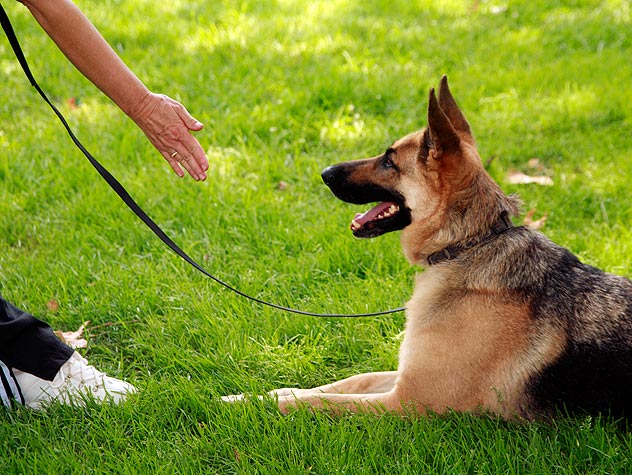Every person who owns a dog wants their dog to be properly trained. The key to knowing how to properly train your dog is education. If you want to have a well-trained dog, you need to educate yourself on the proper dog training techniques. This article contains a number of helpful dog-training tips.
If you want to have a well behaved dog, make sure that you are filling their most basic needs. They need to have water, food, shelter and love. These are essential to a happy and healthy pet, and only then will they want to or have the energy to let you tell them what to do.
Teaching your dog a fun trick, such as “play dead” can be a fun way of distracting him. When your dogs behavior is bad, simply use the command you have established for his trick instead of using negative punishment. This provides for a fun activity for your dog and creates a positive environment for you as well.

Training doesn’t only happen during designated training sessions. Every time you interact with your pup, you are training him. Make sure to stay consistent in your commands and requests and to continue to reinforce those good behaviors. If you are training him to stay off the couch, don’t let him jump up there while you are watching a show. Stay consistent at all times with what you want him to do and you will see the rewards.
Before crating your dog always allow them the opportunity to eliminate. Young dogs, in particular, have to relieve themselves quite frequently. You can’t expect them to not urinate or even defecate in the crate if they haven’t been given the opportunity to do so before they are crated.
If your otherwise well-behaved and housebroken dog starts exhibiting poor behaviors, such as urinating indoors, take it to a vet to rule out any medical problems. Many medical issues can cause a dog to act out. Don’t punish your sick dog for showing you that it is sick; help it.
You want to begin your dog training as early as possible, but not too early. You want to wait until the dog is at least 49 days old before you begin trying to train them. But after that, you’ll want to begin quickly so that your dog can learn while he’s still adapting to his environment, and you don’t have to undo behavior that he’s already learned.
Use cheese as a treat when you are training your canine companion. Cheese is nice change of pace for your dog from packaged treats. Dogs typically love cheese and will consider it a fine treat. Do not overdo it though, cheese can have a high sodium content. Your dog could be sensitive to this.
Dogs usually respond well to physical rewards when being trained. Almost all dogs have an extremely large capacity for love. That makes them respond very well to rewards like belly scratching, back petting and brushing. Your dog wants to be loved and greatly appreciates you giving him affection. Show your happiness with his success this way.
Get in the habit of only giving your dog a direct command one time. It will seem easy to just repeat it over and over until he responds, but don’t do that. Instead, revisit the training until your dog understands that you expect him to react the first time you say something.
When training a troublesome dog there are many different techniques that one can use. However a key factor is establishing that one is dominant over the dog they are trying to train. By ensuring that the dog knows who is in charge it will guarantee that the dog is listening to the person trying to train it.
If your dog is not fond of unfamiliar men, consider this tip to curb Cujo. Keep a jar of treats near the entrance of your home. Bring new people around who love dogs and understand the situation, and have them treat your pooch. They should extend the treat out sideways from their body, without looking at the dog. It’s non-confrontational and teaches the dog that new people are exciting.
It is important to teach your puppy that it is never okay to put his teeth on you. Puppies interact with their litter mates by using their mouths, both to play and to express when they are upset and he will more than likely try to do this to you. You can gently push his face away and say ‘no’ to teach him that this is not acceptable behavior.
Pay careful attention to your timing as you train your dog. It is much more effective to correct him just before he has misbehaved rather than after; if you are able to catch him while he is still thinking about what he should do, your redirection is much more likely to have a lasting impact.
If your dog has a problem with excessive barking, take note of the environment and situation. Being aware of what triggers your dog’s barking can help you correct the situation. You could bring your dog into these situations and correct it when it starts barking.
As was mentioned in the beginning of this article, every pet owner wants their dog to be well trained. In order to properly train your dog, you need to research different dog-training techniques and strategies and educate yourself on what does and does not work. Apply the dog- training advice from this article, and you will be well on your way to having an obedient, well-trained dog.
